Discover 15 hidden attractions, cool sights, and unusual things to do in Waterloo (United States). Don't miss out on these must-see attractions: Young Arena, Grout Museum, and Cedar Valley Arboretum & Botanic Gardens. Also, be sure to include Rensselaer Russell House in your itinerary.
Below, you can find the list of the most amazing places you should visit in Waterloo (Iowa).
Table of Contents
Young Arena
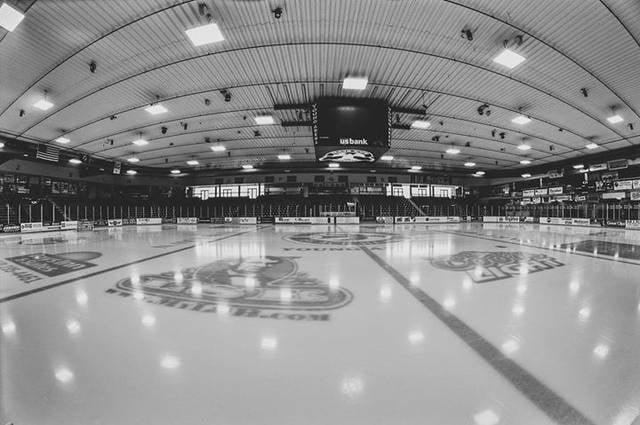
Arena in Waterloo, Iowa. Young Arena is a 3,000-seat multi-purpose arena in Waterloo, Iowa, United States, and was built in 1994. It is home to the Waterloo Black Hawks of the United States Hockey League, the Waterloo Warriors of the Midwest High School Hockey League, the Waterloo Youth Hockey Association, the University of Northern Iowa Hockey Club, the Waterloo Adult Hockey Association and the Cedar Valley Figure Skating Club. Young Arena has also hosted the NCAA Division III wrestling championships, AAU youth wrestling tournaments and a College basketball game in December 1997 between UNI and UMKC.[1]
Address: 125 Commercial St, 50701-1303 Waterloo
Grout Museum
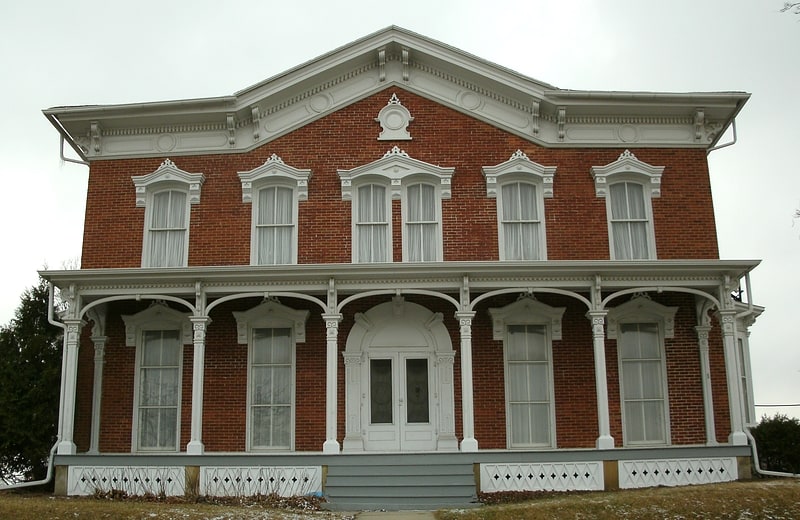
Museum. The Grout Museum District is a set of museums in Waterloo, Iowa. The District consists of the Grout Museum of History & Science, Bluedorn Science Imaginarium, Rensselaer Russell House Museum, Snowden House and the Sullivan Brothers Iowa Veterans Museum.[2]
Address: 503 South St, Waterloo
Cedar Valley Arboretum & Botanic Gardens
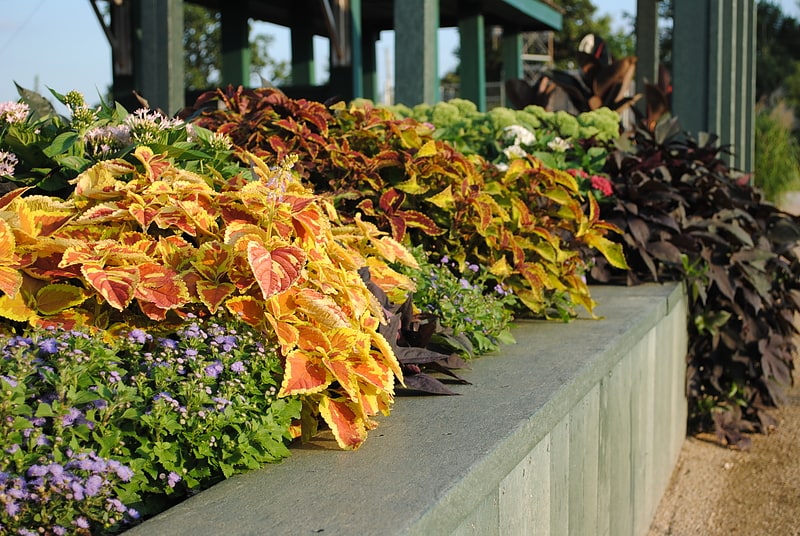
The Cedar Valley Arboretum and Botanic Gardens was founded in 1996 and is located directly East of Hawkeye Community College in Waterloo, Iowa. The mission of the Arboretum is to enhance the quality of life for all individuals through horticulture. The vision of the Arboretum is to serve as a compelling public resource for the study of plants, a leader in environmental stewardship, a cultural center for the community, and a showcase of Iowa's rich heritage with the land. The Arboretum is a 501 non-profit, independent organization and supported by its volunteer base and community support.[3]
Address: 1927 E Orange Rd, 50701-9481 Waterloo
Rensselaer Russell House

Building in Waterloo, Iowa. The Rensselaer Russell House, also known as the Lamson House, is a historic building located in Waterloo, Iowa, United States. Russell was a real estate investor, banker, and a dealer in dry goods. He completed the construction of this two-story Italianate house in 1861. This was one of the first substantial brick houses built in the city. He had to import materials from Dubuque and Chicago to build it. Washington Square, located across the street, was donated by the family to the City of Waterloo in 1871. The house is made up of a two-story brick main block with a smaller 1½-story wing. It features a tall narrow windows, Corinthian columns on the porches, bracketed eaves, and hipped roof capped with a belvedere. The house was listed on the National Register of Historic Places in 1973.[4]
Waterloo Center for the Arts
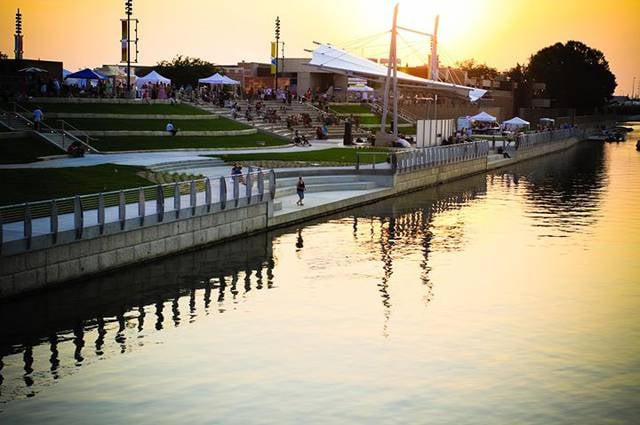
Museum, Art gallery, Shopping
Address: 225 Commercial St, 50701-1313 Waterloo
Walnut Street Baptist Church
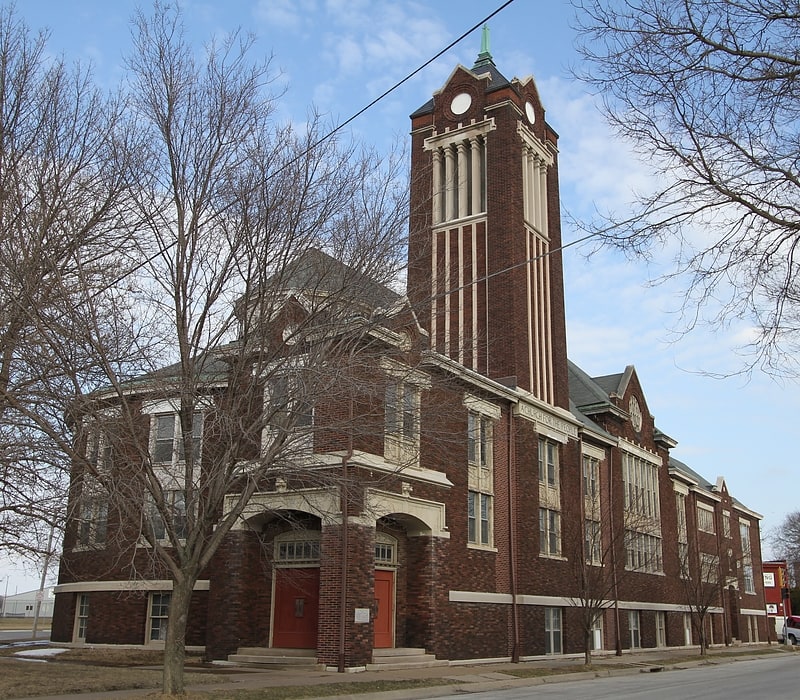
Church building in Waterloo, Iowa. Walnut Street Baptist Church is a church building in downtown Waterloo, Iowa, United States. It has also been known as Faith Temple Baptist Church.
Built in 1908, it was designed for its triangular lot by Waterloo architect Clinton P. Shockley. Although the main exterior materials are merely brick plus stone and concrete trim, the building reflects multiple architectural influences:
The building exhibits the influence of a combination of contemporary architectural styles and trends of the early 20th century including the English Arts and Crafts movement and the Chicago School with minor indications of the academic tradition of the Beaux-Arts.
Clinton Phillip Shockley began his architectural practice in 1906. This was an important work for him. He and Mortimer Cleveland were "by far" the most qualified architects in Iowa and were able to win contracts that would previously have gone to non-Iowa firms.
The Walnut Street Baptist Church congregation worshiped in the facility from its construction until 1970. The congregation was an early leader in the General Association of Regular Baptist Churches. Upon relocating to a new facility and changing its name to Walnut Ridge Baptist Church, the congregation sold the downtown site to Faith Temple Baptist Church (American Baptist Churches USA).
The building was individually listed on the National Register of Historic Places in 2000. In 2019 it was included as a contributing building in the Walnut Street Historic District.[5]
Snowden House

Building in Waterloo, Iowa. The Snowden House is a historic building located in Waterloo, Iowa, United States. William Snowden was a local pharmacist. He had this house built in 1878. It became the home of the Waterloo Women's Club in 1922. The house is a two-story, brick, rectangular Italianate structure. It features a hip roof, a shallow gable with a blind oculus on the main facade, bracketed eaves, and a full-length front porch. The house has segmentally arched windows throughout, with the windows on the front capped with hoodmolds. The two-story wing on the back is a later addition. The interior was completely rebuilt after a 1955 fire. The house was listed on the National Register of Historic Places in 1977.[6]
Waterloo Masonic Temple
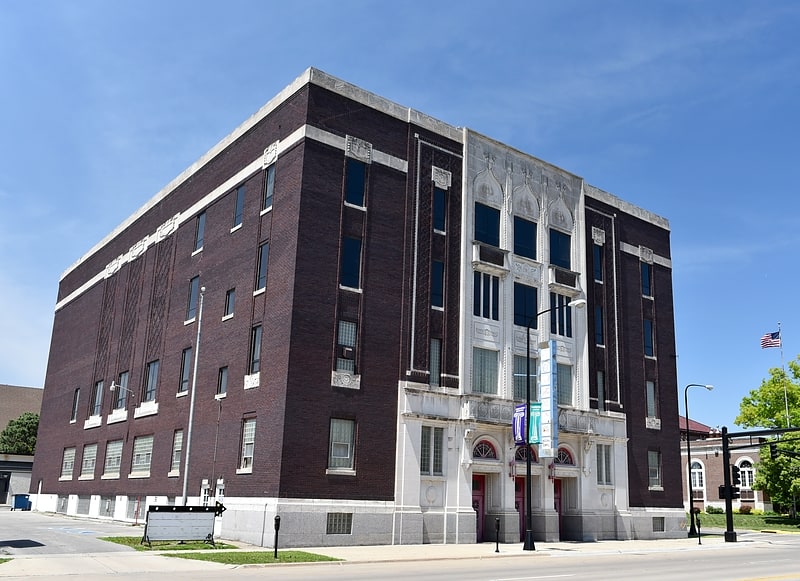
The Waterloo Masonic Temple is a historic building located in Waterloo, Iowa, United States. The first Masonic lodge in town, No. 105 A.F. & A.M, was established on the west side of the Cedar River in 1857. Lodge No. 296 was organized on the east side of the river in 1871, and the two consolidated into one lodge eight years later. They built their first Masonic Temple in 1899 at the intersection of Sycamore Street and East Park Avenue. The city was in the midst of a period economic growth that would see its population double each decade from 1890 to 1910. By 1918 the Masons felt the need for a new facility. Property at the intersection of East Park Avenue and Mulberry Street was acquired in 1920. Local architect John G. Ralston, a fellow Mason, was chosen to design the new building in what has been termed the "Phoenician Revival" style. The exterior walls were completed in 1925, but the interior wasn't completed until 1928. It is a four-story structure built over a raised basement. Its exterior walls are composed of dark red brick accented with light grey limestone. The main façade features a central entrance pavilion with three entrance ways that terminate in Moorish peaks near the roofline. Various Masonic symbols are found carved into the stone, and decorative brickwork flanks the central stone pavilion. The building was listed on the National Register of Historic Places in 2013.[7]
Black Hawk County Soldiers Memorial Hall
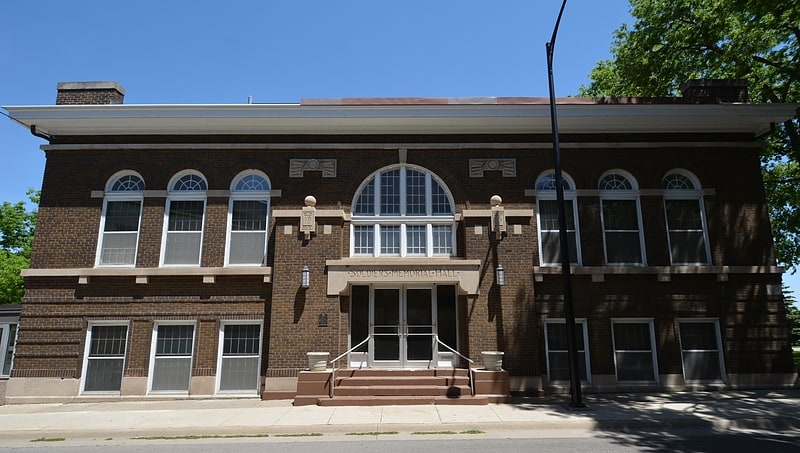
The Black Hawk County Soldiers Memorial Hall, also known as Veterans Memorial Hall, is a Classical Revival veterans hall located at 194 West Fifth Street in downtown Waterloo, Black Hawk County, Iowa. It was built from 1915 to 1916 by the Grand Army of the Republic as a memorial to soldiers who died in the American Civil War. It was listed on the National Register of Historic Places in 1988 due to its architecture and importance in local history.[8]
Hotel Russell-Lamson
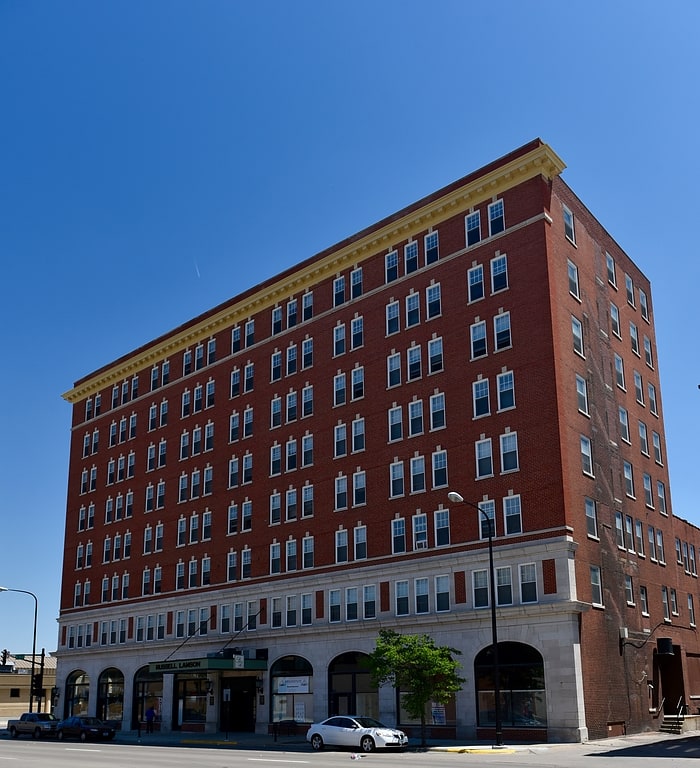
The Hotel Russell-Lamson is a historic building located in Waterloo, Iowa, United States. Clyde O. Lamson, a real estate developer, and his wife Lillian Russell Lamson were instrumental in the construction of the hotel. Completed in 1914, it uses their family names for its name. The Chicago architectural firm of Marshall & Fox designed the eight-story Georgian Revival building. It utilizes the base-shaft-capital configuration that is typical for this building type. The base is composed of rusticated Bedford limestone, which extends to the mezzanine level. The shaft is six floors of red brick veneer. It contrasts with the limestone trim. The capital is a rather simple cornice composed of moldings and a row of dentils.
From 1919 to 1921 the hotel became the home of the Greater Waterloo Association. It was the result of a merger of four organizations that had worked separately to improve and develop the city. Black Hawk Broadcasting Company established radio station KWWL in the hotel in 1947, and television station KWWL in 1953. Studios for both stations were located in the hotel until 1958. The building was listed on the National Register of Historic Places in 1988. The 250-room hotel has been converted into a 90-unit apartment building.[9]
YMCA Building
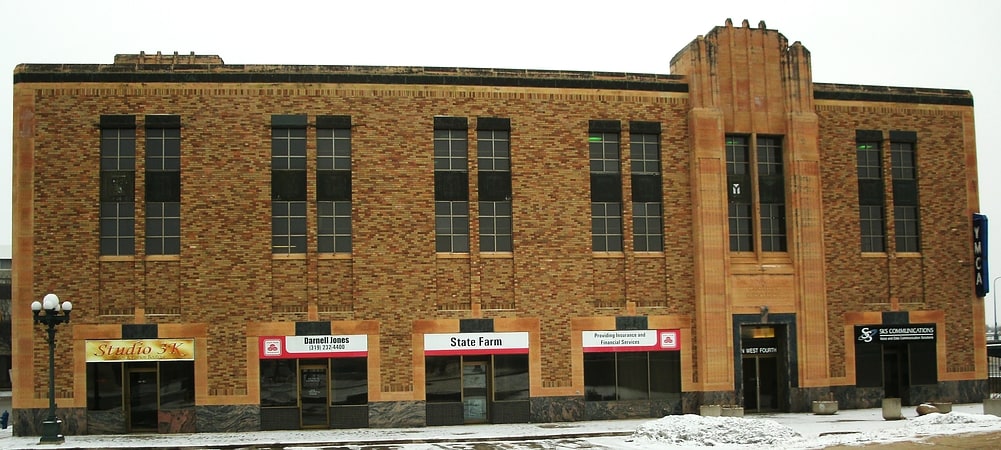
The YMCA Building is a historic building located in Waterloo, Iowa, United States. The local YMCA was established in 1868, three months after the city was incorporated. Its first permanent building was built at this location in 1893. As membership expanded they eventually out grew the building, and it was torn down in 1930. The present building was designed by local architect Mortimer Cleveland and his associate D.B. Toenjes. The general contractor was H.A. Maine Construction. The three-story brick structure features decorative elements from the Art Deco mode. The first level has housed commercial firms in the storefronts. An addition was built onto the west side of the building in 1959 to house adult activities. The local YMCA built a new facility and moved from here in 1982. The following year the building was listed on the National Register of Historic Places. It has been converted into an office building.[10]
Grace Methodist Episcopal Church
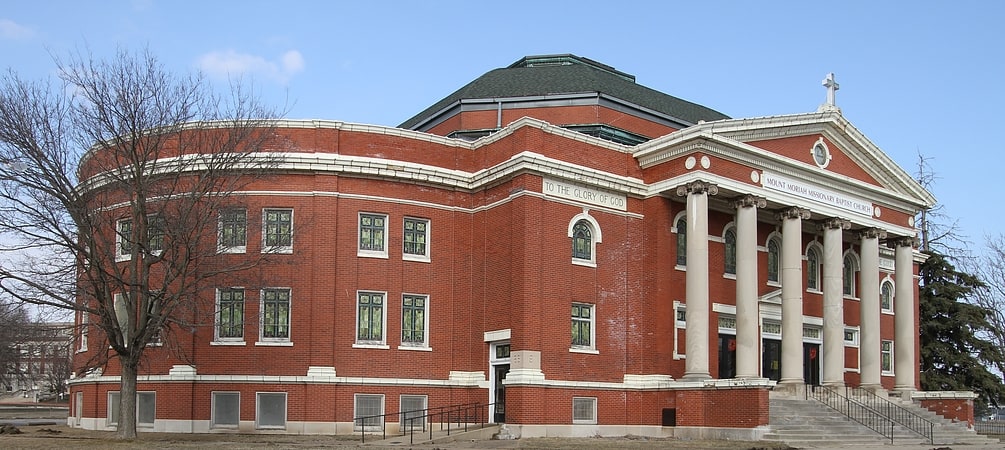
Building. Grace Methodist Episcopal Church, also known as Mount Moriah Missionary Baptist Church, is a historic building located in Waterloo, Iowa, United States. The congregation that built this building was organized in 1861 as First Methodist Episcopal Church. They built church buildings in 1865 at Lafayette and East Fifth Streets, and then at East Fourth and Mulberry Streets in 1877. They changed their name to Grace in 1895. They completed this building at Walnut and East Fifth Streets in 1913. The brick, Neoclassical structure designed by Turnbill & Jones features a large central dome and a large classical portico with six Ionic columns. Mount Moriah Missionary Baptist Church acquired the building from Grace United Methodist in 1996. The building was listed on the National Register of Historic Places in 2011.[11]
Sans Souci Island
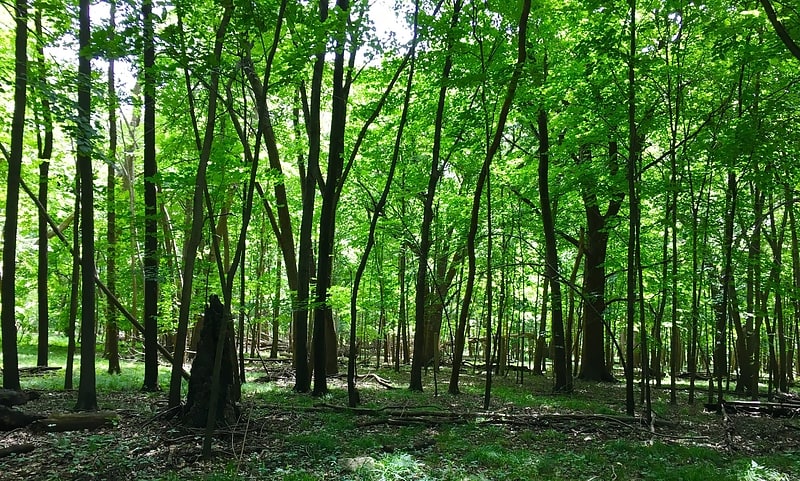
Island in Waterloo, Iowa. This article refers to the island located in Waterloo, Iowa. For further uses of the name "Sans Souci", see Sans Souci
Sans Souci Island is an island in the Cedar River in the city of Waterloo, Iowa. The island has a population of between 40 and 50 residents and is 100 acres in size, with most of the land area being woodland. The island was severely affected by the Iowa flood of 2008. By June 10, 2008, the island's entire population was forced to evacuate following the breach of a sandbag dike.[12]
Emerson School

School in Waterloo, Iowa. Emerson School is a historic building located in Waterloo, Iowa, United States. It is oldest extant school campus on the city's west side. Emerson was established in 1893 when its first building was constructed on this property. It was the third school in West Waterloo. The original building was replaced when the present main building was completed in 1906. The annex was built ten years later to accommodate the school's increased enrollment. They are connected by a hyphen. The complex was designed by Waterloo architect John G. Ralston. The original building is a two-story brick structure on a raised limestone basement designed in the Neoclassical style. It features broken pediment gable ends, stylized pilasters on the gable ends of the upper level, Palladian dormers, and corner pilaster capitals. The annex was designed in the Second Renaissance Revival style. It is also a two-story brick structure. Typical of this style the annex features distinct horizontal divisions separated by belt and stringcourses. There is also a parapet frieze across the top. In 1973 the building became Expo Alternative High School. The building was closed in 1981, and it was later sold. It was listed on the National Register of Historic Places in 2004.[13]
Hotel President
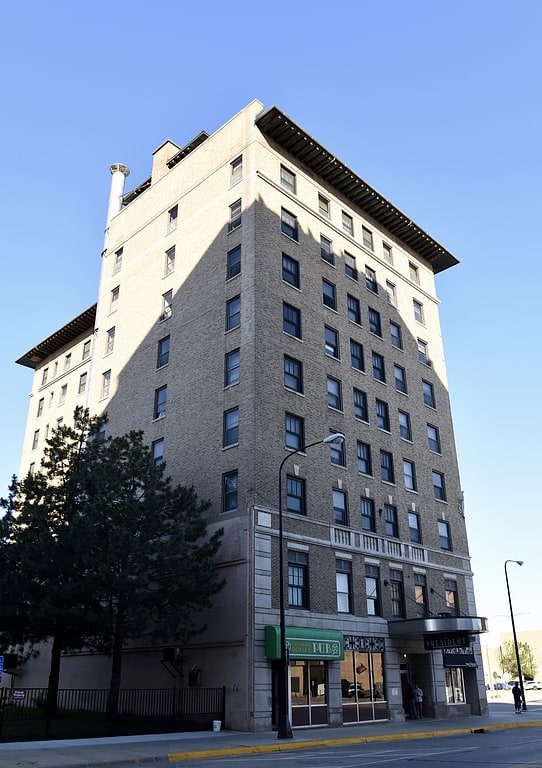
The Hotel President, also known as the Park Towers Apartments, is an historic building located in downtown Waterloo, Iowa, United States. The building was completed in 1929, and it opened as a "showcase hotel." In 1948, Paul "Pinkie" George and five other wrestling promoters from the Midwest founded the National Wrestling Alliance in the hotel. The manager of the hotel at the time was Lark Gable, the grandfather of Olympic gold medal winner Dan Gable. Various companies owned and operated the hotel until it was acquired in 1968 by Elders Inc. a nonprofit group of churches. They converted the building into subsidized housing. It was bought by local developers Brent Dahlstrom and Jim Sulentic in 2011 and they sold it to Huntley Witmer Development of Los Angeles. Huntley Witmer spent $12 million in 2015 renovating the building that continues to house 84 units of federally subsidized housing. It was listed on the National Register of Historic Places in 2017.[14]